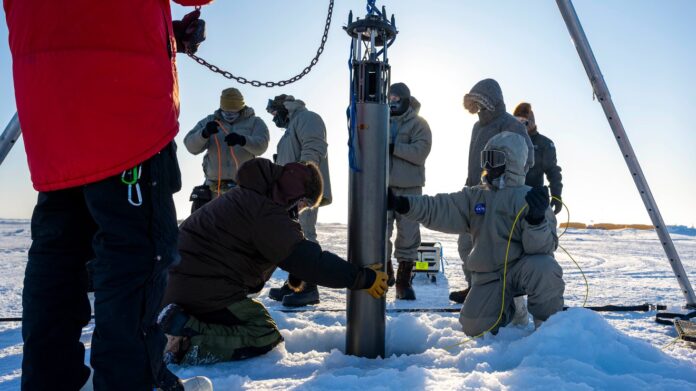Engineers from NASA’s Jet Propulsion Laboratory, known for their work on spacecraft, are now turning their expertise to developing underwater robots designed to measure how rapidly climate change is melting Antarctica’s vast ice sheets. These underwater robots will provide critical data on rising sea levels, which is a growing global concern.
A prototype of these submersible underwater robots was recently tested in the Arctic, beneath the frozen Beaufort Sea, by a team from NASA’s Jet Propulsion Laboratory (JPL). Paul Glick, a JPL Robotics engineer and lead investigator for the IceNode project, highlighted the importance of these robots in reaching the most inaccessible parts of the Earth.
These advanced underwater robots are being designed to gather precise data on the melting rate of Antarctica’s coastal ice, enhancing computer models that predict future sea level rises. This mission is particularly significant as Antarctica’s ice sheet is a major focus for over 1,500 scientists attending the 11th Scientific Committee on Antarctic Research conference in southern Chile.
A JPL study published in 2022 revealed that Antarctica’s ice shelf has lost approximately 12 trillion tons of ice since 1997—double previous estimates. If completely melted, it could raise global sea levels by around 200 feet (60 meters).
The underwater robots are cylindrical vehicles that will be deployed through boreholes in the ice or from vessels at sea. Once in position, they will drift in currents to reach “grounding zones” where the ice meets the ocean, areas that are typically unreachable by satellite.
These underwater robots will attach themselves to the underside of the ice shelf, recording data on seasonal fluctuations and other key metrics for up to a year before returning to the surface to transmit their findings via satellite.
Also Read: Robotic Surgery to Launch at Mayo Hospital Lahore, PC-I Submitted
During the March field test, an IceNode prototype of these underwater robots dived 330 feet (100 meters) into the ocean, gathering vital data on salinity, temperature, and water flow. Additional tests for these underwater robots are planned before full-scale deployment can be scheduled.


